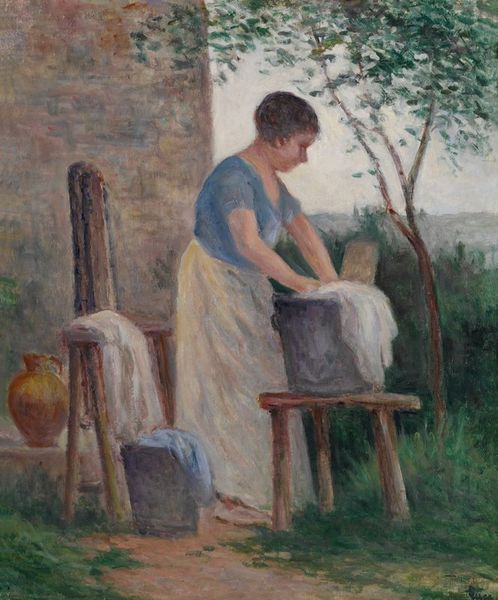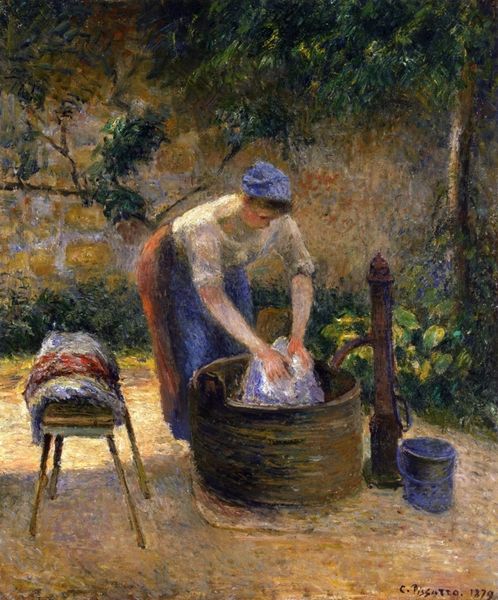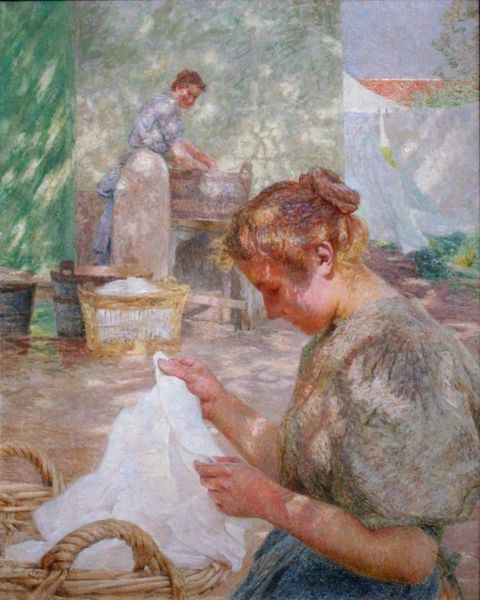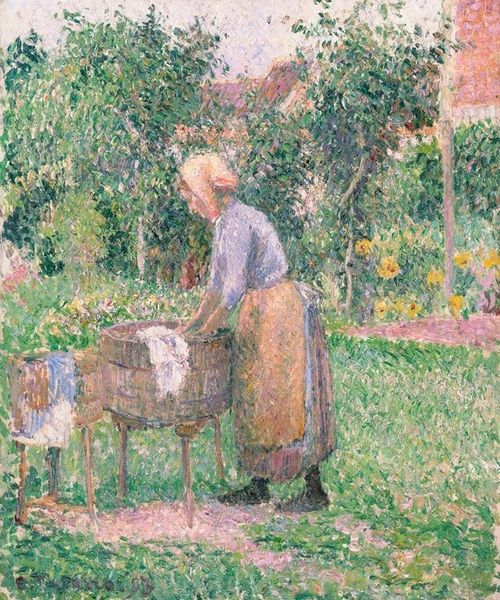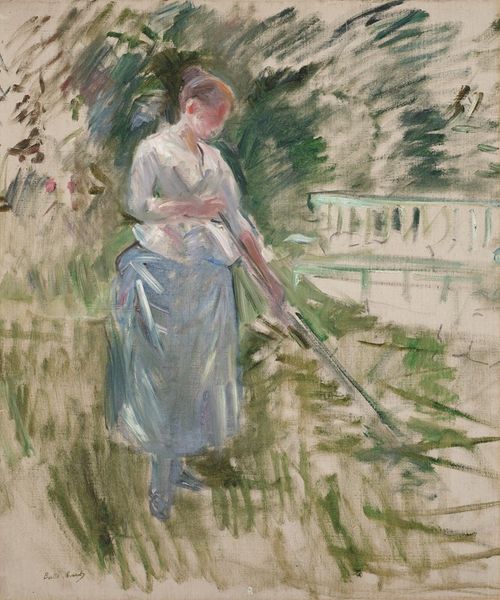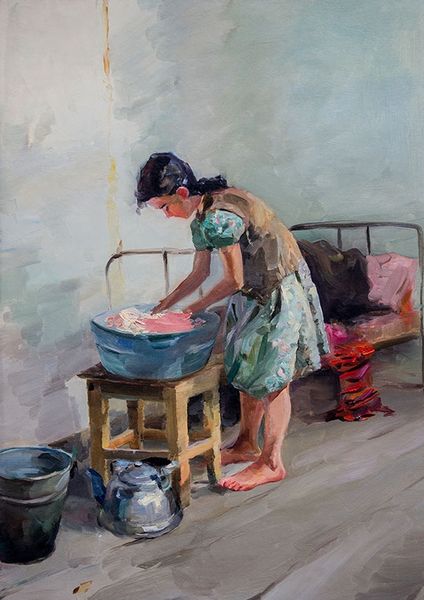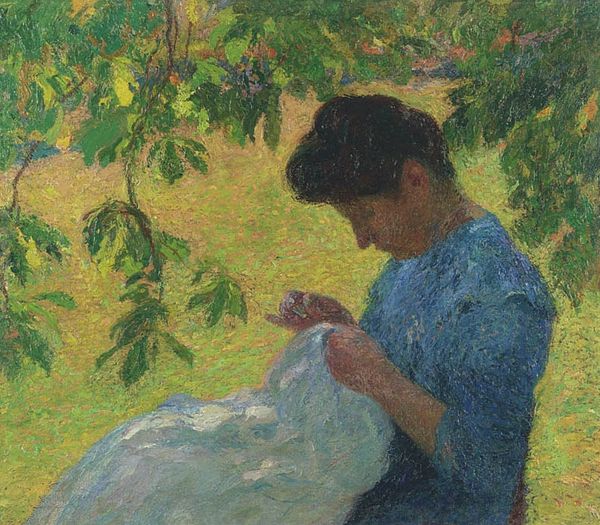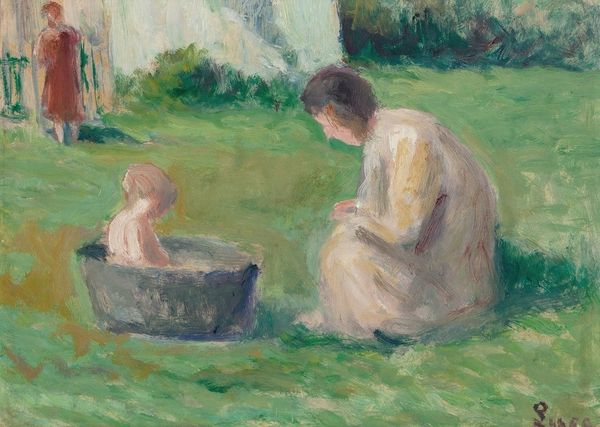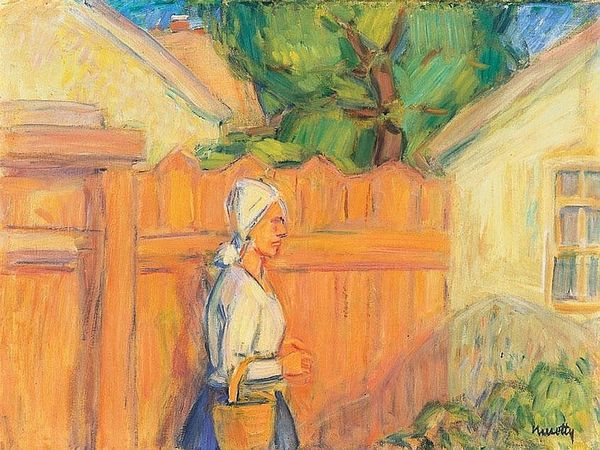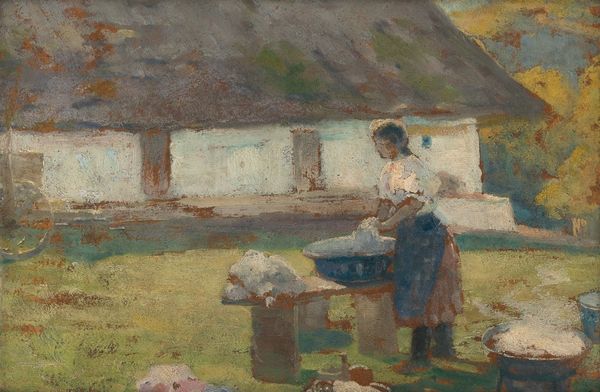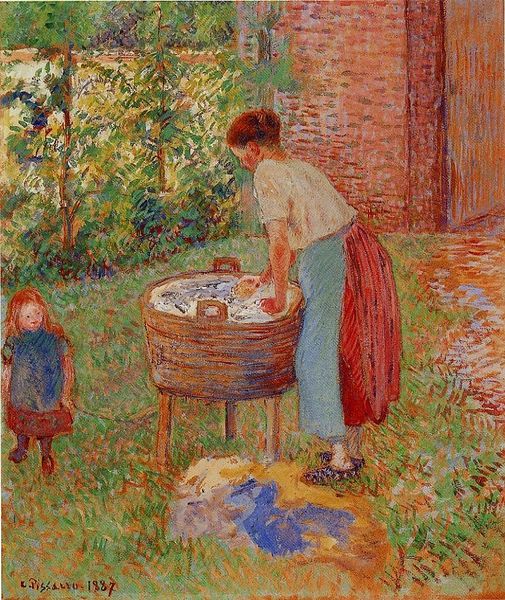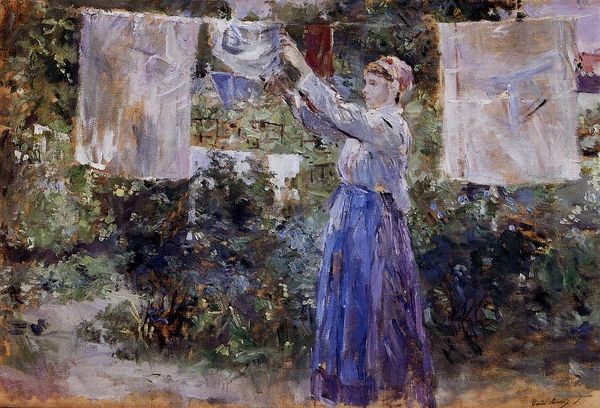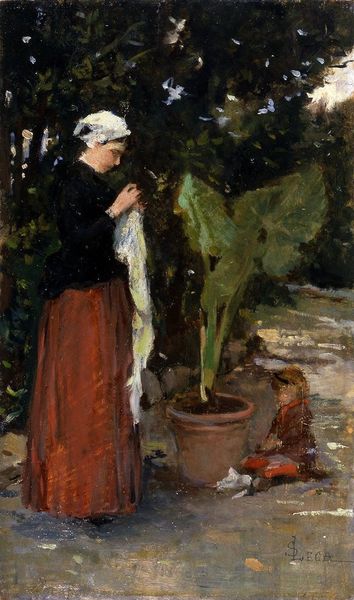
painting, plein-air, watercolor
#
figurative
#
painting
#
impressionism
#
impressionist painting style
#
plein-air
#
landscape
#
figuration
#
oil painting
#
watercolor
#
watercolour illustration
#
genre-painting
#
watercolor
Copyright: Public Domain: Artvee
Editor: This is "Femme lavant du linge dans un baquet" by Camille Pissarro, around 1889. It looks like it's watercolor and maybe oil on paper. The colors are so soft, it almost feels unfinished in a charming way. What do you see in this piece, looking at its pure form? Curator: The intrigue for me lies in Pissarro's deliberate composition. Note how the verdant backdrop, suggested with loose brushstrokes and tonal variations, both contrasts and complements the more defined form of the woman. The interplay between these elements—the organic, almost chaotic greenery versus the structured figure and laundry tub—creates a visual tension. Do you perceive a dominant line or shape guiding your eye? Editor: I think my eye is drawn to the diagonal created by the wheelbarrow leading up to the woman's posture. It directs me into the painting. Does the lack of detail distract from the narrative in any way? Curator: On the contrary, it reinforces it. Pissarro, through the seeming sketchiness, concentrates our attention. Consider the semiotic function of the white laundry. The white draws the eye and signifies cleanliness and labor. Note also Pissarro’s calculated use of negative space, particularly around the figure. These are not omissions but intentional deployments that direct the eye and heighten the sense of the woman existing within her environment. Editor: So it’s like the unfinished quality *is* the point, focusing our attention on specific forms and the relationships between them? Curator: Precisely. The artwork becomes an exercise in visual prioritization. Pissarro asks us to consider what is emphasized through form, color, and compositional structure, and thereby what holds significance. Editor: That’s a great point. I initially saw it as just a scene of everyday life, but now I see how Pissarro uses form itself to convey meaning and direct our gaze. Thank you. Curator: And I appreciate your initial observations; they provided a rich starting point for our analysis.
Comments
No comments
Be the first to comment and join the conversation on the ultimate creative platform.
